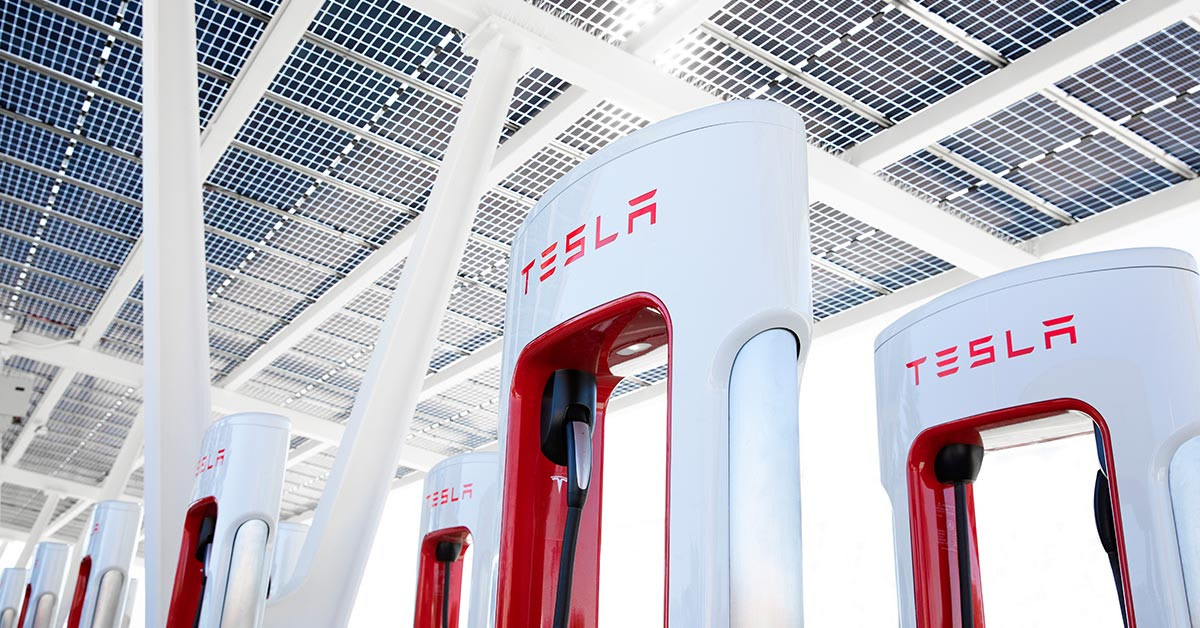For a current count of Superchargers, you can use supercharge.info. The site itself has some basic statistics and graphs, and you can download the data to do a deep dive like the below.
supercharge.info
Note that the counts below might be slightly different than the site page, the below counts are using the JSON raw data from today rather than the charts.
There are currently 27759 open (installed and operational) Supercharger stalls among 3092 sites worldwide.
This does NOT include the 1410 stalls under construction on 128 sites, nor the 2168 known planned (permit) stalls on 193 sites. There's also 3 temporarily closed sites not counted.
Doing a quick date check, there were 10728 Supercharger stalls on 1249 sites added in the last 18 months (548 days) worldwide as of today
Note that the figures they quoted would have been a different time frame with possibly more stalls added at an earlier date that would have dropped off the window I am using. I don't know the time frame they used so this is what I have. Also note the completion date is the date it was added to Supercharge.info using crowdsourced data, so it may be off by a few days.
---
For the USA alone, there are 11809 open stalls with 1173 sites in the USA.
This also does not include the 822 stalls on 75 sites that are under construction in the USA or 1712 stalls on 143 sites that are planned (with "permit" status) nor the 2 temporarily closed sites.
The new Superchargers in USA in the same 18 month range as of today is 3925 stalls on 369 sites.
With the above numbers, we can compare the EA and Tesla buildout.
Electrify America has the following milestones
3500 dispensers on 800 sites by the end of December 2021
9500 dispensers on 1700 sites by the end of December 2025
This is a total of
6000 new dispensers on 900 new sites over the next 4 years.
This is over 4 years, so divide by 4 to get the number added per year which is
1500 new dispensers on 225 new sites each year
---
Tesla has the following milestones, extrapolated to USA numbers (which is an approximation, since their announcement is tripling worldwide)
11809 current stalls on 1173 sites in the USA right now
Triple the current count in 2 years - which at current counts is 35427 stalls in 2 years (but site count is not provided)
That would be 23618 new stalls in 2 years.
Divide by 2 to get the number added per year is
11809 new stalls per year
If this is actually the case then EA is going to fall behind even further than Tesla by 10309 stalls
per year, just in the US.
---
So let's say that the Tesla figures are triple of what it was 18 months ago (which they have doubled since then)
I wouldn't have interpreted it that way, but let's do the worst case scenario anyways.
Tesla has 11809 stalls on 1173 sites in the USA now
They added 3925 stalls on 369 sites in USA in the last 18 months
That means that 18 months ago they had
7884 stalls on 804 sites in the USA
Triple the 18 months ago figures is
23652 stalls total (7884*3) in the USA
Subtract the current count of 11809 to get
11843 new stalls added over the next 2 years
Divide by 2 to get
5921.5 new stalls every year
This is still 4421.5 stalls
per year over what EA is planning on.
---
At least with the current projections, I can't see any way that Electrify America can even get the
same rate as Tesla, never mind catch up to them.




.jpeg?auto=webp)